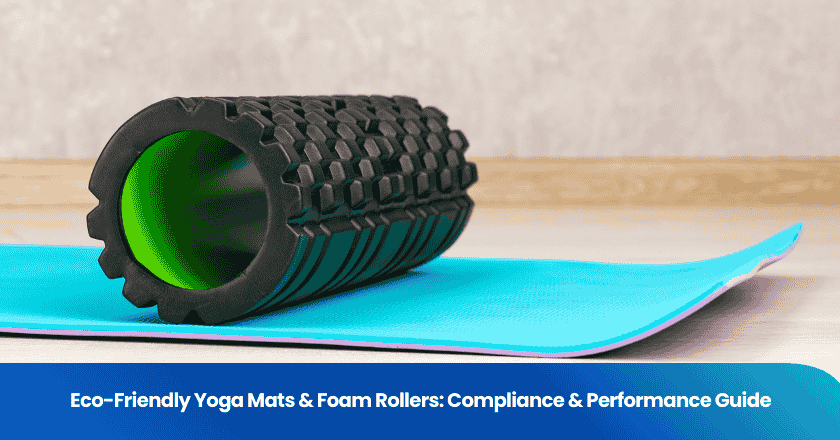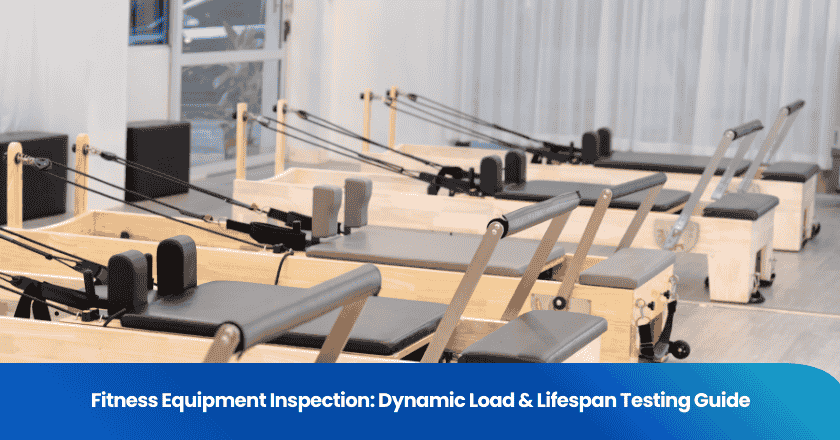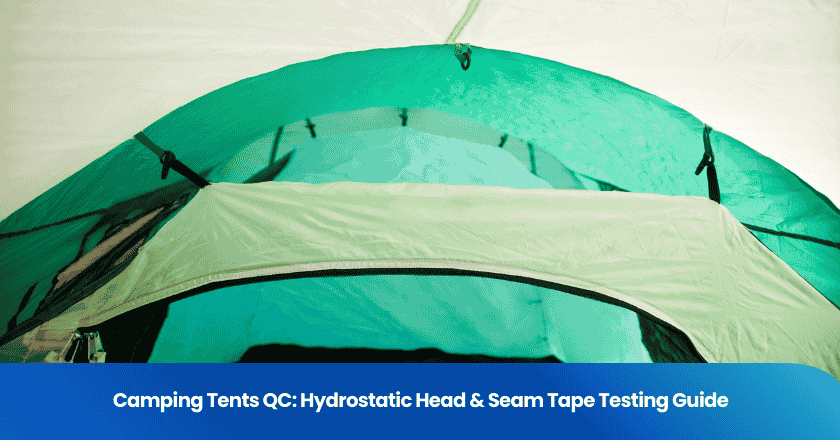
A quality inspection company china plays a vital role in helping businesses ensure product quality before goods leave the factory. Companies rely on quality inspection to identify defects, verify compliance, and minimize costly mistakes when sourcing quality products from china. Through systematic checks, a quality inspection company china reviews every batch, helping importers ensure product quality meets international standards and customer expectations.
Key Takeaways
l Quality inspection companies in China help businesses find defects and ensure products meet standards before shipment.
l Inspections happen at different stages: before production, during production, before shipment, and during container loading.
l Inspectors use random sampling and detailed checklists to check product quality, packaging, and labeling.
l Choosing a reliable inspection company with experience and clear communication improves product quality and reduces risks.
l Quality inspections protect businesses by reducing defects, ensuring compliance, and keeping customers satisfied.
Quality Inspection in China
Why Quality Inspection Matters
Quality inspection in China serves as a critical safeguard for importers and businesses sourcing goods from Chinese factories. Many companies rely on product inspection in china to detect defects, verify specifications, and ensure that products meet both regulatory and customer requirements. Without a robust inspection process, businesses risk receiving substandard goods, which can lead to costly returns, damaged reputations, and even legal issues.
A third-party inspection agency provides an unbiased evaluation of products before shipment. These agencies help companies maintain quality assurance by identifying issues early in the production cycle. They also support compliance with international standards, which is essential for businesses that operate in global markets. By using a china inspection service, companies can reduce the risk of non-compliance and avoid disruptions in their supply chain.
Tip: Early detection of defects through product inspection in china can save time and money, and prevent disputes with suppliers.
Inspection Standards and Methods
Product inspection in china follows strict standards to ensure consistency and reliability. One widely used standard is ISO2859-1, which outlines procedures for random sampling and acceptance quality limits (AQL). Inspectors select samples from each batch and evaluate them against predefined criteria. This method helps determine if the entire shipment meets the required quality level.
A third-party inspection agency typically uses detailed checklists tailored to the product type. Inspectors assess physical appearance, functionality, safety, and compliance with relevant regulations. They also perform on-site tests and measurements to verify product specifications. Random sampling ensures that the inspection results accurately reflect the overall quality of the batch.
China inspection service providers often conduct compliance checks to confirm that products meet both local and international standards. These checks may include reviewing certifications, testing materials, and verifying labeling requirements. Product inspection in china also covers packaging and labeling to ensure that goods arrive safely and meet destination country regulations.
| Inspection Method | Purpose | Example Activities |
|---|---|---|
| Random Sampling | Assess batch quality | Select samples, check for defects |
| Compliance Checks | Verify regulatory adherence | Review certifications, test safety |
| On-site Testing | Confirm product functionality | Measure dimensions, test features |
| Packaging Inspection | Ensure safe transport and correct labels | Check packaging, verify barcodes |
Quality inspection in china forms the backbone of quality assurance for businesses importing from China. By following established standards and methods, companies can trust that their products will meet expectations and comply with all necessary regulations.
Types of Product Inspection in China
Pre-Production Inspection
Pre-production inspection takes place before manufacturing begins. Inspectors review raw materials, components, and production plans. They verify that suppliers use correct materials and follow agreed specifications. This step helps prevent problems later in the process. Many companies request initial production inspection to confirm that factories understand requirements. Product inspection in china at this stage reduces the risk of defects and delays.
In-Process Inspection
Inspection during production occurs while goods are being manufactured. Inspectors visit factories to check samples from the production line. They look for defects, monitor assembly methods, and ensure workers follow procedures. Initial production inspection also helps identify issues early, allowing factories to correct mistakes before completing the order. Product inspection in china during this phase supports consistent quality and reduces waste.
Note: In-process inspection can catch problems that might not appear until later stages, saving time and resources.
Pre-Shipment Inspection
Pre-shipment inspection stands as one of the most critical steps in product inspection in china. Inspectors examine finished goods before shipment. They check product quantity, quality, packaging, and labeling. This inspection confirms that products meet buyer specifications and international standards. Pre-shipment inspection helps importers avoid receiving defective or non-compliant goods. Many businesses rely on product inspection in china at this stage to protect their reputation and minimize returns.
| Inspection Type | Purpose | Timing |
|---|---|---|
| Pre-shipment inspection | Verify finished goods meet standards | Before shipment |
| In-process inspection | Monitor quality during manufacturing | During production |
| Initial production inspection | Confirm materials and setup | Before production |
Container Loading Checks
Container loading checks take place when goods are packed for shipping. Inspectors oversee the loading process to ensure correct quantities and proper handling. They verify that products match the packing list and that containers are clean and secure. Product inspection in china at this stage prevents mix-ups and damage during transit. Specialized services, such as Amazon FBA inspections, often include container loading checks to meet strict fulfillment requirements.
Tip: Container loading checks help importers avoid costly shipping errors and ensure products arrive safely.
Product inspection in china covers every stage of the supply chain. Each inspection type serves a unique purpose, helping businesses maintain quality and compliance from start to finish.
The Inspection Process
Planning and Preparation
A quality inspection company begins the inspection process by gathering essential information about the product and production schedule. Inspectors review purchase orders, technical specifications, and quality requirements. They create an inspection checklist tailored to the product type and client expectations. This checklist includes criteria such as dimensions, materials, labeling, and packaging standards. Inspectors coordinate with the factory to confirm the inspection date and ensure that the necessary samples will be available. Proper planning helps prevent misunderstandings and ensures that the inspection covers all critical aspects.
Tip: A detailed inspection checklist improves efficiency and reduces the risk of overlooking important details.
Sampling and Testing
Inspectors use internationally recognized sampling methods to select products for evaluation. The most common approach follows the ISO2859-1 standard, which defines sample sizes and acceptance quality limits (AQL). Inspectors randomly choose items from the batch to represent the overall quality. They examine each sample for defects, measure dimensions, and test functionality. The inspection checklist guides the process, ensuring that every requirement receives attention. During pre-shipment inspection, inspectors focus on finished goods to verify that they meet buyer specifications and regulatory standards.
| Step | Description | Tools Used |
|---|---|---|
| Sample Selection | Randomly pick items from the batch | Sampling plan, AQL chart |
| Visual Inspection | Check for visible defects and workmanship | Inspection checklist |
| Functional Testing | Test product performance and safety | Measuring tools, test kits |
| Documentation | Record findings and defect types | Inspection checklist |
Sampling and testing allow inspectors to identify issues before products leave the factory. This stage of the inspection process helps companies avoid costly returns and maintain customer satisfaction.
Packaging and Label Review
Inspectors assess packaging and labeling to ensure products arrive safely and comply with destination country regulations. They use the inspection checklist to verify that packaging materials protect the goods during transit. Inspectors check for correct barcodes, product labels, and shipping marks. During pre-shipment inspection, they confirm that packaging matches the packing list and that all items are present. Proper packaging and accurate labeling reduce the risk of damage, loss, or customs delays.
Note: Careful review of packaging and labels helps importers meet international shipping requirements and avoid compliance issues.
Reporting and Follow-Up
After completing the inspection, the company prepares a comprehensive inspection report. This document summarizes findings, highlights defects, and provides recommendations for corrective actions. The report includes photos, measurements, and detailed notes from the inspection checklist. Importers receive the report promptly, allowing them to make informed decisions about accepting or rejecting the shipment. If inspectors identify significant issues, they may recommend a re-inspection or further testing. Follow-up actions ensure that suppliers address problems and maintain consistent product quality.
A thorough reporting and follow-up process strengthens supplier relationships and supports long-term quality assurance. Companies rely on the inspection process to protect their interests and uphold product standards.
Choosing a Quality Inspection Company China
What to Look For
Selecting a reliable quality inspection company china requires careful evaluation. Importers should focus on several key factors to ensure effective oversight of their supply chain. Experience stands out as a top priority. A company with a proven track record in various industries can handle different product categories and understand specific quality requirements. Importers should also check for clear communication skills. Inspectors must provide detailed reports and respond promptly to questions.
A third-party inspection agency should demonstrate strong knowledge of international standards and local regulations. Importers benefit from companies that offer transparent pricing and flexible service packages. A quality inspection company china should provide sample reports so clients can assess the level of detail and accuracy. Many importers also value companies that use advanced tools and technology for inspections.
Tip: Request references or case studies to verify the company’s performance with similar products.
Best Practices for Importers
Importers can maximize the value of a quality inspection company china by following best practices. They should define clear inspection criteria and share these requirements with both the supplier and the inspection team. Regular supplier audits help maintain consistent standards and build trust. Importers should schedule inspections at critical stages, such as pre-production and pre-shipment, to catch issues early.
Cost considerations matter as well. Importers should compare service fees and understand what each china inspection service includes. Building strong relationships with suppliers and the inspection team leads to better cooperation and fewer misunderstandings. Importers should review inspection reports carefully and follow up on corrective actions when needed. Using a quality inspection service helps businesses reduce risks and ensure products meet expectations.
| Best Practice | Benefit |
|---|---|
| Define clear criteria | Fewer misunderstandings |
| Schedule regular audits | Consistent product quality |
| Review reports thoroughly | Prompt issue resolution |
Benefits of Quality Inspection
Risk Reduction
Quality inspection companies play a crucial role in reducing risks for importers and businesses. They identify defects before products leave the factory. This early detection prevents costly returns and shipment delays. Inspectors check for issues such as incorrect materials, poor workmanship, and non-compliance with specifications. By catching problems at the source, companies avoid disruptions in their supply chain.
A structured inspection process also helps businesses manage supplier relationships. When suppliers know that inspections will occur, they maintain higher standards. This approach leads to fewer disputes and smoother transactions. Companies that invest in quality assurance protect their reputation and build trust with customers.
Note: Risk reduction through inspection saves time and money, allowing businesses to focus on growth.
Compliance and Customer Satisfaction
Meeting international standards is essential for businesses sourcing quality products from china. Quality inspection ensures that goods comply with regulations in the destination country. Inspectors review certifications, labeling, and packaging to confirm compliance. This step helps companies avoid customs issues and legal penalties.
Customer satisfaction depends on receiving products that match expectations. Quality assurance processes verify that each item meets agreed specifications. Satisfied customers are more likely to become repeat buyers and recommend the business to others.
| Benefit | Impact on Business |
|---|---|
| Regulatory Compliance | Fewer legal issues |
| Accurate Labeling | Smooth customs clearance |
| Consistent Quality | Higher customer satisfaction |
Quality inspection supports long-term business success by ensuring compliance and delivering reliable products to customers.
Quality inspection companies in China play a key role in maintaining product standards and reducing risks for importers. They help businesses detect defects, ensure compliance, and protect reputations. Understanding each step of the inspection process allows companies to make informed decisions. Choosing a reliable partner strengthens supply chains and supports long-term success.
Applying best practices in quality inspection helps businesses safeguard their interests and deliver consistent, high-quality products to customers.
FAQ
What is the Acceptance Quality Limit (AQL) in product inspection?
AQL represents the maximum number of defective items allowed in a sample batch. Inspectors use AQL standards to decide if a shipment meets quality requirements. This method helps companies maintain consistent product standards.
How does a third-party inspection company select samples for testing?
Inspectors follow international sampling standards, such as ISO2859-1. They randomly select items from the batch to ensure the results reflect overall quality. This process reduces bias and improves reliability.
Tip: Random sampling increases the accuracy of inspection results.
Can importers request customized inspection checklists?
Importers can provide specific requirements for inspection. The company creates a checklist based on product type, buyer expectations, and regulatory standards. Customized checklists help address unique quality concerns.
What happens if inspectors find defects during the inspection?
Inspectors document all defects in the inspection report. The company recommends corrective actions or re-inspection. Importers decide whether to accept, reject, or request improvements before shipment.
| Action Taken | Result |
|---|---|
| Accept shipment | Proceed with delivery |
| Request correction | Supplier fixes issues |
| Reject shipment | No delivery until resolved |
Are packaging and labeling included in the inspection process?
Inspectors review packaging and labeling to ensure compliance with shipping and regulatory standards. They check for correct barcodes, product labels, and packaging materials. Proper packaging protects goods and prevents customs delays.
Grow your business with TradeAider Service
Click the button below to directly enter the TradeAider Service System. The simple steps from booking and payment to receiving reports are easy to operate.



